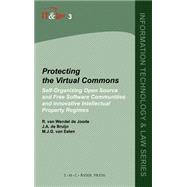
Note: Supplemental materials are not guaranteed with Rental or Used book purchases.
Purchase Benefits
What is included with this book?
| Acknowledgements | v | ||||
| Abbreviations | xii | ||||
| Introduction | 1 | (4) | |||
|
2 | (1) | |||
|
3 | (2) | |||
| One Describing Open Source and Free Software Communities | 5 | (28) | |||
|
5 | (1) | |||
|
6 | (1) | |||
|
7 | (5) | |||
|
8 | (1) | |||
|
8 | (1) | |||
|
9 | (2) | |||
|
11 | (1) | |||
|
12 | (1) | |||
|
12 | (7) | |||
|
12 | (3) | |||
|
15 | (1) | |||
|
16 | (2) | |||
|
18 | (1) | |||
|
19 | (11) | |||
|
20 | (1) | |||
|
20 | (3) | |||
|
23 | (1) | |||
|
24 | (2) | |||
|
26 | (1) | |||
|
26 | (1) | |||
|
27 | (1) | |||
|
28 | (2) | |||
|
30 | (1) | |||
|
30 | (3) | |||
| Two Interpreting Open Source and Free Software Communities | 33 | (18) | |||
|
33 | (1) | |||
|
34 | (2) | |||
|
34 | (1) | |||
|
35 | (1) | |||
|
36 | (5) | |||
|
37 | (1) | |||
|
38 | (1) | |||
|
38 | (2) | |||
|
40 | (1) | |||
|
40 | (1) | |||
|
41 | (3) | |||
|
41 | (1) | |||
|
42 | (1) | |||
|
43 | (1) | |||
|
44 | (6) | |||
|
44 | (2) | |||
|
46 | (3) | |||
|
49 | (1) | |||
|
50 | (1) | |||
| Three The Commons Under Pressure: Business Processes and IPR | 51 | (20) | |||
|
51 | (1) | |||
|
52 | (6) | |||
|
52 | (1) | |||
|
53 | (2) | |||
|
55 | (1) | |||
|
56 | (2) | |||
|
58 | (4) | |||
|
58 | (1) | |||
|
59 | (1) | |||
|
60 | (1) | |||
|
61 | (1) | |||
|
62 | (4) | |||
|
62 | (1) | |||
|
63 | (1) | |||
|
63 | (1) | |||
|
64 | (1) | |||
|
64 | (1) | |||
|
65 | (1) | |||
|
66 | (4) | |||
|
66 | (2) | |||
|
68 | (1) | |||
|
68 | (1) | |||
|
68 | (1) | |||
|
69 | (1) | |||
|
70 | (1) | |||
| Four Mechanisms to Protect the Commons | 71 | (22) | |||
|
71 | (1) | |||
|
72 | (7) | |||
|
72 | (1) | |||
|
73 | (1) | |||
|
74 | (1) | |||
|
75 | (2) | |||
|
77 | (1) | |||
|
77 | (1) | |||
|
78 | (1) | |||
|
79 | (7) | |||
|
79 | (2) | |||
|
81 | (1) | |||
|
82 | (1) | |||
|
83 | (1) | |||
|
84 | (1) | |||
|
85 | (1) | |||
|
86 | (3) | |||
|
86 | (1) | |||
|
87 | (1) | |||
|
88 | (1) | |||
|
88 | (1) | |||
|
89 | (1) | |||
|
89 | (2) | |||
|
90 | (1) | |||
|
91 | (2) | |||
| Five Living Apart Together: Hybrid Business Strategies on the Edge of the Commons | 93 | (16) | |||
|
93 | (1) | |||
|
94 | (5) | |||
|
94 | (1) | |||
|
95 | (1) | |||
|
96 | (1) | |||
|
97 | (2) | |||
|
99 | (3) | |||
|
99 | (1) | |||
|
99 | (1) | |||
|
100 | (1) | |||
|
101 | (1) | |||
|
102 | (3) | |||
|
102 | (1) | |||
|
102 | (2) | |||
|
104 | (1) | |||
|
104 | (1) | |||
|
105 | (4) | |||
| Six Analysis and Conclusion | 109 | (8) | |||
|
109 | (1) | |||
|
110 | (1) | |||
|
111 | (2) | |||
|
113 | (4) | |||
| References | 117 | (8) | |||
|
117 | (5) | |||
|
122 | (2) | |||
|
124 | (1) | |||
| Appendix: the licenses | 125 | (38) | |||
|
126 | (1) | |||
|
127 | (3) | |||
|
130 | (2) | |||
|
132 | (10) | |||
|
142 | (13) | |||
|
155 | (8) | |||
| About the authors | 163 | (2) | |||
| Index | 165 |
The New copy of this book will include any supplemental materials advertised. Please check the title of the book to determine if it should include any access cards, study guides, lab manuals, CDs, etc.
The Used, Rental and eBook copies of this book are not guaranteed to include any supplemental materials. Typically, only the book itself is included. This is true even if the title states it includes any access cards, study guides, lab manuals, CDs, etc.